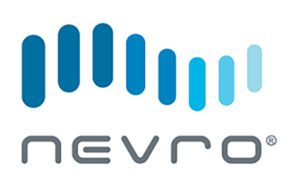 Nevro (NYSE:NVRO) today announced 24-month data from its Senza painful diabetic neuropathy (PDN) spinal cord stimulation (SCS) trial.
Nevro (NYSE:NVRO) today announced 24-month data from its Senza painful diabetic neuropathy (PDN) spinal cord stimulation (SCS) trial.
Redwood City, California-based Nevro published its study results in Diabetes Research and Clinical Practice. The trial evaluated the long-term efficacy of high-frequency 10 kHz SCS to treat refractory PDN. It compared patients receiving the Senza HFX SCS treatment and conventional medical management (CMM) to CMM alone.
The SENZA-PDN trial enrolled 216 patients with refractory PDN. That made it the largest randomized controlled trial for this therapy and population, Nevro said. It included 142 patients implanted with the high-frequency (HFX) SCS system, followed for 42 months. That included 84 initial recipients and 58 crossovers from CMM alone.
Data demonstrated that patients receiving this SCS treatment experienced durable pain relief and significant improvements in health-related quality of life (HRQoL) and sleep at 24 months post-implant.
Additionally, patients experienced neurological symptom improvements, Nevro said. That includes those in motor, sensory and reflex function. Long-term data supports the safety and effectiveness of 10 kHz SCS and its potential to improve quality of life.
Dr. Erika Petersen, said the data points to SCS as a viable, long-term relief solution for those with PDN. Petersen, the study’s principal investigator, serves as a professor of neurosurgery and director of functional and restorative neurosurgery at the University of Arkansas for Medical Sciences.
“These results further validate not only the efficacy of high-frequency 10 kHz SCS for pain relief, but also show profound improvements in quality of life, sleep, and neurological function,” Petersen said in a news release.
More on the Nevro study results
At 24 months, Nevro SCS reduced pain by a mean of 79.9% compared to baseline. The company said 90.1% of participants experienced greater than or equal to 50% pain relief.
Investigators assessed neurological function versus the study baseline in all implanted patients. At 24 months, 65.7% of implanted patients exhibited clinically meaningful improvements over baseline. This occurred in sensory, motor and reflex function with no worsening in any category. A majority of the improvements came in sensory function, which may have implications in restoring protective sensation.
HRQoL significantly improved with Nevro SCS based on the EuroQol 5-Dimensional 5-Level (EQ-5D-5L) questionnaire. Among all implanted patients, the mean EQ-5D-5L index value increased by 0.146 from preimplantation to 24 months. That comes in at nearly 3-5 times the minimally important difference in people with type 2 diabetes.
Baseline sleep quality — poor among all study participants — saw reduced pain interference with Nevro SCS treatment. The study measured sleep quality with a mean score on the Pain and Sleep Questionnaire 3-Item Index (PSQ-3; 0-10 cm scale) of 6.5 cm at preimplantation. Those in the SCS group saw a 65.5% decrease in the mean PSQ-3 score, from 6.5 pre-implant to 1.9 at 24 months.
Nevro reported that incidence and type of procedure-related complications proved comparable to those in SCS literature for all populations. Five (3.2%) systems were explanted due to infection, with none explanted due to lack of efficacy.
“Compared to previous studies evaluating traditional low-frequency systems for these patients, high-frequency 10 kHz SCS demonstrated greater pain reduction and higher responder rates over time,” said Dr. David Caraway, Nevro chief medical officer. “As we continue gathering data, we expect these results to be used in physician referral decisions and continue to support market access for high-frequency SCS for PDN patients.”